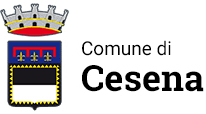

Via Aldini, 26
47521 - Cesena

The news on the foundation of this building are imprecise and contradictory. It was probably founded in the 14th century, but in the year 1486 it was "sumptuously restored" (Fantaguzzi). The monastery probably had its maximum expansion halfway through the 17th century, when it hosted 69 nuns and
was experiencing a moment of productive building activity. The bell tower was built in 1650, and was then modified in 1774 by Agostino Azzolini.
On the 11 of July of 1810 the monastery was closed and the nuns were expelled. This is how its history of decay and decline started. With the restoration of the papal power, the church was opened again, while the administration of the Ospedale del Santissimo Crocifisso opened the Recovery Home for the
Daughters of the Poor in the monastery.
New restoration works started in 1860 and, after the First World War, a part of the monastery was occupied by a tobacco factory.
The orphanage was closed after 1960. New restoration works started in 1975, and the building is now a landmark in the life of the city, as it hosts a few households and a huge amount of public facilities: the Municipal Art Gallery, the San Biagio Cinema Centre, the Ert - Emilia Romagna Teatri
Foundation, as well as the Counsellorship for Culture of the Municipality of Cesena.
Of the Church, which used to host a painting by Giuseppe Milani (author of many frescoes in the now lost chapel of SS.mo Sacramento), only the perimeter, which is now the entrance to the cinema, is left. The area now occupied by the green hall of the Cinema San Biagio used to contain the 62 seats of the choir of the nuns who, through a system of grids, could follow and still be apart from the functions celebrated in the Church downstairs. The most interesting part in the architecture of the former monastery is the courtyard of the loggia, the entrance to which is through a door at the end of the main
entrance hall.
The brick loggia at the ground floor probably belongs to the oldest part of the building, while the stone loggia at the first floor probably dates back to the 15th century. From the entrance hall, taking the stair on the left, visitors enter the Municipal Art Gallery. The gallery hosts works that belong
to the Municipality, and was opened in 1984 to allow the permanent exhibition of a collection which, although not complete nor homogeneous, still deserves to be admired.